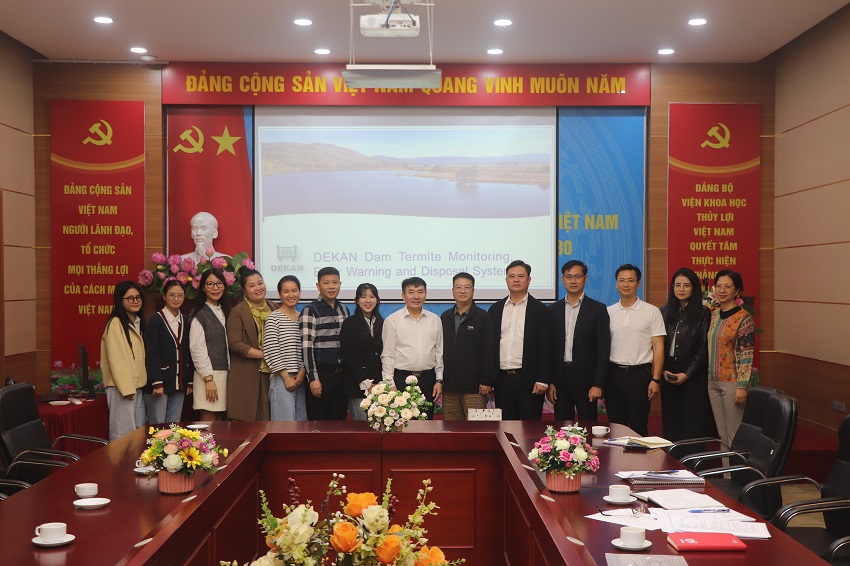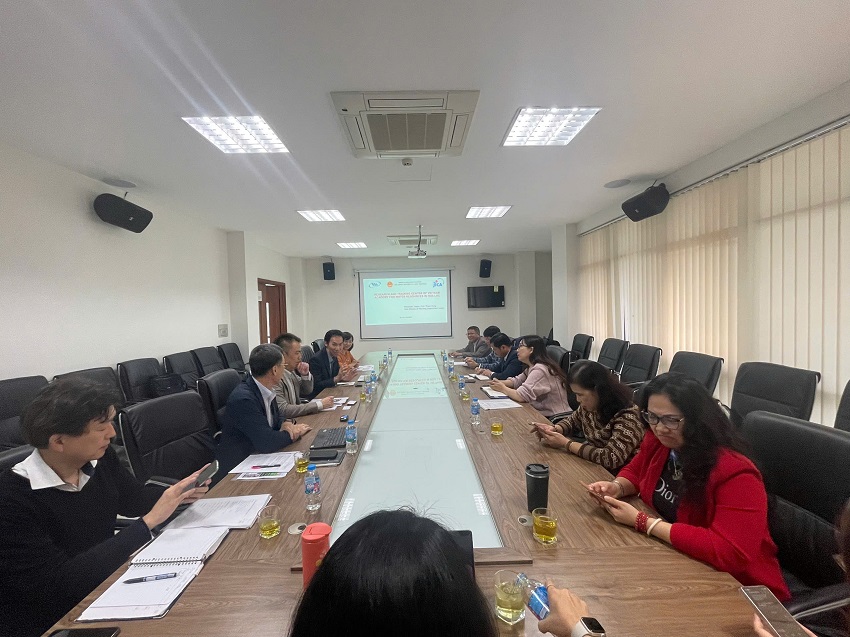Nghiên cứu sử dụng xi măng và phụ gia khoáng để cứng hóa đất bùn nạo vét tại tỉnh Cà Mau
29/05/2023Sử dụng hỗn hợp xi măng kết hợp với các phụ gia khoáng (tro bay và xỉ lò cao) để cứng hóa đất bùn nạo vét làm vật liệu thay thế cát là rất cần thiết tại những vùng xây dựng khan hiếm về nguồn cát tự nhiên. Trong nghiên cứu sử dụng các hỗn hợp gồm (xi măng + tro bay), (xi măng + xỉ lò cao) và (xi măng + xỉ lò cao + tro bay) để cứng hóa đất bùn ở các vùng nước khác nhau gồm nước lợ, nước ngọt và nước mặn tại tỉnh Cà Mau. Đất bùn cứng hóa đáp ứng được các yêu cầu kỹ thuật để thay thế cát trong san lấp mặt bằng. Kết quả thí nghiệm cho thấy sử dụng phương pháp cứng hóa đất bùn bằng hỗn hợp (xi măng + xỉ lò cao + tro bay) cho hệ số thấm của đất bùn cứng hóa rất thấp, Kt = 4.1×10-8 đến 5.5×10-8 m/s, cường độ của đất bùn cứng hóa tăng từ 12.2% đến 15.4% so với mẫu đất bùn cứng hóa bằng xi măng.
1. ĐẶT VẤN ĐỂ
2. VẬT LIỆU SỬ DỤNG TRONG NGHIÊN CỨU
2.1. Xi măng
2.2. Phụ gia khoáng hoạt tính
3. KẾT QUẢ NGHIÊN CỨU VÀ THẢO LUẬN
3.1. Thiết kế cấp phối thí nghiệm
3.2. Kết quả thí nghiệm các chỉ tiêu kỹ thuật của đất bùn cứng hóa
4. KẾT LUẬN
TÀI LIỆU THAM KHẢO
[1] D. N. Little and N. Syam, “Introduction to Soil Stabilization, Understanding the Basics of Soil Stabilization/: An Overview of Materials and Techniques,” Caterpillar, vol. 7, no.January, pp. 1-16, 2006.
[2] D. Wang, N. E. Abriak, and R. Zentar, “Strength and deformation properties of Dunkirk marine sediments solidified with cement, lime and fly ash,” Eng. Geol., vol. 166, pp. 90-99, 2013.
[3] F. Al-Ajmi, H. Abdalla, M. Abdelghaffar, and J. Almatawah, “Strength Behavior of Mud Brick in Building Construction,” Open J. Civ. Eng., vol. 6, no. 3, p. 482, 2016.
[4] F. Al-Ajmi, H. Abdalla, M. Abdelghaffar, and J. Almatawah, “Strength Behavior of Mud Brick in Building Construction,” Open J. Civ. Eng., vol. 6, no. 3, p. 482, 2016.
[5] Hadi M.N.S., Farhan N.A., và Sheikh M.N. (2017). Design of geopolymer concrete with GGBFS at ambient curing condition using Taguchi method. Construction and Building Materials, 140, 424-431.
[6] Huang Y. và Lin Z.S. (2010). Investigation on phosphogypsum-steel slag-granulated blast-furnace slag-limestone cement. Construction and Building Materials, 24, 1296-1301.
[7] K. T. Rukenya, K. J. Wambua, K. Charles, and T. George, “Soil Stabilization Using Rice Husk Ash and Natural Lime as an Alternative to Cutting and Filling in Road Construction,” J. Constr. Eng. Manag., vol. 143, no. 5, p. 4016127, May 2017.
[8] L. Yu and M. Djunaidy, “A Vacuum Consolidation Method Application Case for Improving Dredging Slurry”.
[9] Lê Huy Cứ và nnk, “Nghiên cứu gia cố đất bằng các phụ gia vô cơ để xây dựng công trình,” Báo cáo tổng kết khoa học và công nghệ đề tài, Liên hiệp các hội khoa học và kỹ thuật Việt Nam, Tổng hội Địa chất Việt Nam, 2007.
[10] M. D. Liu and S. Pemberton, “A study of the strength of lime treated soft clays,” Int. Symp. Exhib. Geotech. Geosynth. Eng. Challenges Oppor. Clim. Chang., no. December, pp. 245-251, 2010.
[11] S. A. KALIANNAN, “Light solidification of Kuala Perlis dredged marine soil via admixtures of GGBS - cement and sand: 1-D compressibility study.,” no. August, 2016.
[12] S. Alsafi, N. Farzadnia, A. Asadi, and B. K. Huat, “Collapsibility potential of gypseous soil stabilized with fly ash geopolymer; characterization and assessment,” Constr. Build. Mater., vol. 137, pp. 390-409, 2017.
[13] S. Rezaeimalek, A. Nasouri, J. Huang, S. Bin-Shafique, and S. T. Gilazghi, “Comparison of short-term and long-term performances for polymer-stabilized sand and clay,” J. Traffic Transp. Eng. (English Ed., vol. 4, no. 2, pp. 145-155, 2017.
[14] S. Soleimani, S. Rajaei, P. Jiao, A. Sabz, and S. Soheilinia, “New prediction models for unconfined compressive strength of geopolymer stabilized soil using multi-gen genetic programming,” Measurement, vol. 113, pp. 99-107, 2018.
[15] Wang D., Abriak N.E., và Zentar R. (2013). Strength and deformation properties of Dunkirk marine sediments solidified with cement, lime and fly ash. Engineering Geology, 166, 90-99.
[16] Wang D., Zhu J., và He F. (2019). CO2 carbonation-induced improvement in strength and microstructure of reactive MgO-CaO-fly ash-solidified soils. Construction and Building Materials.
[17] Y. Yi, C. Li, S. Liu, and M. Asce, “Alkali-Activated Ground-Granulated Blast Furnace Slag for Stabilization of Marine Soft Clay,” J. Materail Civ. Eng., vol. 11, no. 4, pp. 246-250, 2010.
[18] Yadu L. và Tripathi R.K. (2013). Effects of Granulated Blast Furnace Slag in the Engineering Behaviour of Stabilized Soft Soil. Procedia Engineering, 51, 125-131.
[19] Yi Y., Liska M., và Al-Tabbaa A. (2014). Properties of Two Model Soils Stabilized with Different Blends and Contents of GGBS, MgO, Lime, and PC. Journal of Materials in Civil Engineering, 26(2), 267-274.
________________________________________________________________________
Chi tiết bài báo xem tại đây: Nghiên cứu sử dụng xi măng và phụ gia khoáng để cứng hóa đất bùn nạo vét tại tỉnh Cà Mau
Ngô Anh Quân
Viện Thủy công
Nguyễn Quang Phú
Trường Đại học Thủy lợi
TẠP CHÍ KH&CN THỦY LỢI
Ý kiến góp ý:













